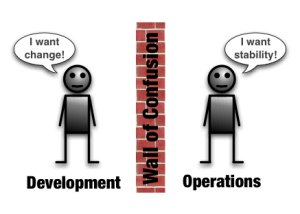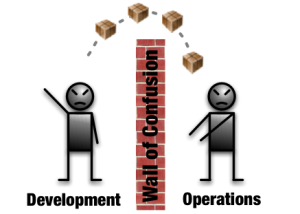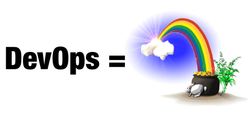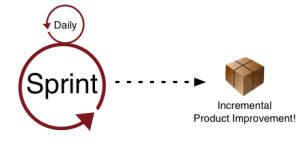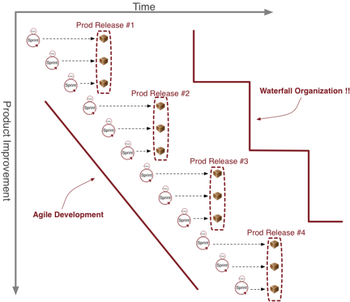Overview
Impacts
- Focusing on digital business growth strategies at the same time has led CEOs to compete with each other.
- Because technology was regarded as a commodity, CIOs' tech-related competitor radar is weak.
- Digital competition is disruptive, and CEO blind spots cause substantial risk to business results.
Recommendations
- The CIO should work with the Chief Strategy Officer (CSO) or CEO to answer two key questions: Do we intend to lead our sector in digital business? If not, then who are we following?
- The CIO must collaborate with the competitor intelligence department to increase the digital business and information technology story flow and analysis taking place in the firm.
- CIOs and CSOs or CEOs should broaden competitor landscape models to take account of the unusual angles of attack that digital business can enable.
Analysis
Before the great recession, CEOs were mostly strategically disinterested in information technology. It had become an increasingly undifferentiating commodity function for the majority of firms. Since the recovery, when creating revised long-term business strategies for the "new normal," many CEOs have seized on digital business as a vector for innovation and growth. It's as if the recession pressed a massive strategy reset button. As a consequence, all players rebuilt their strategies around the same time, and all have awakened to the power of digital business at the same time. Contention is therefore inevitable.
CIOs should help their companies by substantially increasing the tech-related competitor intelligence capability of the firm. Ensure the leadership team is constantly aware of where and how competitors are using information and technology in new ways to propel their digital business strategies.
Figure 1. Impacts and Top Recommendations for CEOs, CIOs and Chief Strategy Officers

Source: Gartner (December 2014)
Impacts and Recommendations
Focusing on digital business growth strategies at the same time has led CEOs to compete with each other
"IT Doesn't Matter" was Harvard Business Review's favorite article of the year in 2003. Its suggestion that IT was a commodity, not a source of competitive advantage, was central to board-level thinking for a decade. However, in the recession's aftermath, business leaders have re-evaluated the idea that information technology is unimportant. In fact, it turned out to be highly disruptive. In the first 14 years of the century, massive new technology-fueled behemoths — such as Amazon, Google and Facebook — arose at incredible speed. These companies now reshape industries such as book publishing, retailing and car design by their disruptive innovation actions. Though what they do is different, they exploit the same information technology power under the hood: Moore's law.
Faced with this reality, leaders in many industries are now scrambling to harness the same power for themselves and apply digital innovation to their businesses. Our 2014 CEO survey found growth was the top business priority, and technology was fourth (after costs and profits). Technology is the growth tool of choice, and when respondents mentioned it, half used words associated with the modern digital era such as mobile, cloud, social or big data. As the majority of CEOs all start to move in the same direction around the same time, it is inevitable that they will contend with one another for the same customers and resources, using various digital business ideas.
In our 2012 CEO survey, a quarter of the respondents could not name a company they admired for its use of IT for competitive advantage. By our 2014 survey, the proportion had risen to a third. Given the vast rise in coverage of technology and innovation in the business press and the large number of CEOs who now mention it in their speeches, we cannot see this change as an indicator of disinterest. Rather, we read it as a measure of increasing confusion. CEOs are unclear about what's working and who's winning in mature industries like their own. That should not surprise us because many companies in many sectors all decided to head down this path around the same time in 2012 and 2013.
Our 2014 CEO survey found that CEOs expect CIOs to be leaders in digital business change. The risk is that failure to develop sophisticated competitive intelligence will be deemed a lack of CIO foresight and proof that CIOs don't get it. Business and IT leaders must do more to examine competitor actions with technology and learn from both the successes and the mistakes — major and minor.
Recommendations for CEOs and CIOs:
Discuss how digital business is changing your industry — not just your company — at least four times a year. Decide whether your company intends to be a pioneer, a fast follower, or a late follower. If, like most, you intend to be a fast follower, list the names of the innovators you will be tracking. If you don't have a list, then fresh competitor research is urgently needed. Keep revising the list. If you intend to be a fast follower, decide what an acceptable time lag might be. Discuss how to accelerate decision processes, reallocate resources and rapidly acquire new capabilities when needed.
Because technology was regarded as a commodity, CIO's tech-related competitor radar is weak
In the era of the 1990s and the early 2000s, it was common for IT staffs to regularly track, examine and report sources of information about competitor actions in IT, looking for signals of competitive advantage. During the period 2003 to 2012, IT as a corporate function was tasked with standardizing, consolidating and cost minimizing and became much more of an introspective internal order taker and service provider. IT was not asked to look outward, and it was not expected to be very competitor aware, except perhaps in peer benchmark comparisons of its cost base.
In recent years, seemingly innocuous digital innovations, sometimes coming from very unusual sources, have quite rapidly turned into major threats. Some examples include:
- The emergence of the e-book reader in 2007/8 had unpredicted effects on publishers.
- The emergence of the electronic cigarette, circa 2011, has had major effects on big tobacco.
- The rise of Facebook challenged assumptions about search engine ad dominance, circa 2010.
- Google's "self-driving car" experiments, circa 2011, redirected the future of the auto industry.
- Uber's app for metering car rides deeply disrupted the taxi trade in 2013.
- Someday soon, someone will turn drone delivery experiments into a reality.
Usually these innovations do not come out of the blue; there is a long preamble, and there are telltale moves being made in advance. Startups are bought, tech supplier contracts are signed, talent is hired, ad slots are booked, patents are filed, websites are quietly opened, office space is rented in tech districts. Ugly small-scale Version 1.0 products are tested without fanfare or released with obtuse and badly worded minimal press releases. The list of signals goes on and on, but you have to be on the lookout for them. You need a hi-gain corporate antenna, watching for the small moves that might add up to something big later. If your collective corporate consciousness is aware enough, someone on your staff will notice the pattern. The competitor awareness habit must be restored.
Recommendations for CIOs and CSOs:
Collaborate on a new competition landscape model. About 30% of large enterprises have a formally designated head of strategy. Many others have someone working less officially in that role, without a title. Sometimes strategy really is done by the CEO alone. The CIO should identify and reach out to that person. First, discuss the traditional competitor landscape, so you know and agree where its natural boundaries lie. Then frame a new view of competition to include startups, entrants from adjacent industries and attack from the tech sector itself. Some key questions to ask and answer are:
- If we were to create a tech-fueled, "greenfield" startup attack in our industry, what would it look like?
- How could technology undermine a barrier we have relied on to separate us from other industries, for example, by regulation, customer access or value chain position?
- If Google decided to revolutionize our industry with its information and technology, what would it do?
- Using the Peteraf and Bergen framework, what other kinds of entities might use digital business to address our industry's customer base in an unusual way?
If there is corporate myopia, the CIO must be an agitator, ensuring that the analysis of competition extends beyond traditional competitors and industries.
Digital competition is disruptive, and CEO blind spots cause substantial risk to business results
Watching traditional competitors used to be adequate. A decade ago, most likely they were the only ones who could use technology as a competitive weapon and make a significant challenge stick. Happily, in staid semioligopolistic industries, they thought like you and acted like you, anyway. Also, they were all buying the same big packaged business application IT ideas from the same providers. Big surprises were very unlikely. But conditions have changed.
The technologies of the Internet era, especially the cloud, have made it far easier for small startups to perform and deliver like big companies, from the get go. They can reach global markets via the Web, mobile and e-commerce service providers, including Amazon and eBay. They can operate efficiently and effectively by applying the latest management tools, accessed at low rates, using software as a service. They can scale fast — up and down. They can, therefore, mount a market experiment, fail, learn, retrench, replan and try again, faster than you can change — anything. They can access capital easily via crowdfunding, and they can do their marketing for very low cost via social media. They can source skills via talent portals, and they can source Chinese contract manufacturing via Alibaba.com. These capabilities have allowed hundreds of startup e-cigarette brands around the world to grow under the feet of the tobacco industry, astonishingly quickly.
The big technology vendors of a decade ago, the likes of IBM, Microsoft, Oracle, HP and Cisco, were mostly no threat to you, then or now. Their tacit contract with their customers has always been a nonaggression pact. They would sell you technology and help you deploy it to make your business better. They would work hard to sell you on their ideas. That was the beginning and the end of it. However the tech firms of today have other ideas. They see no problem invading other industries if they feel those industries are not acting on the promise of information and technology. Apple went into music. Amazon went into books. Google went into cars. Others among the "born digital" era tech companies will no doubt follow this path, now that the pattern is established and their investors can see that sometimes it works.
Technology is also capable of dissolving the traditional boundary lines between industry sectors. Because of this, old established players in one industry can choose to attack another. For example, what is the real distinction between TV, radio and "print" media in the smartphone and tablet era? What is the distinction between magazine designer, retailer, CPG manufacturer and marketplace provider when all those factors can be brought together in an online 3D print-on-demand service?
For these reasons, technology-related competitor intelligence radar needs to be far wider ranging than it was in its previous heyday. The challenges of Internet-extended competitor landscapes were first observed around the time of the original "dot" boom, and one particular analytical framework from that era can be very helpful for expanding your horizons.
In 2003, Peteraf and Bergen published a simple framework for scanning dynamic competitive landscapes — the situation when threats come from new entrants outside the traditional industry. They proposed a two-dimensional model that looks for actors that have similar resources on one axis and similar underlying customer markets on the other. So, for example, Google has large-scale computing resources similar to a global bank. LinkedIn has business professionals as a customer base, similar to an international business school. This model helps identify emerging potential competitors and indirect competitors, who might reshape your industry from the outside.
Recommended Actions
CIO and head of competitor intelligence:
Assume technology-related intelligence is inadequate. That default position is likely. It's nobody's fault. Business conditions and market trends have changed, so you must adjust. Discuss the sources you use today and how, or indeed whether, stories about competitor actions with IT are being tracked and reported. The CIO should offer to feed in more information and possibly help curate a section within regular competitor reports that circulate both in the C-suite and to the wider management teams. The CIO can apply many technology-related intelligence resources, including:
- New-hire interviews
- Vendor contacts
- Tech industry news sources and trade papers
- Technology conferences and exhibitions
- Technology-related social networks such as LinkedIn and Glassdoor
- Professional IT research and advisory services





